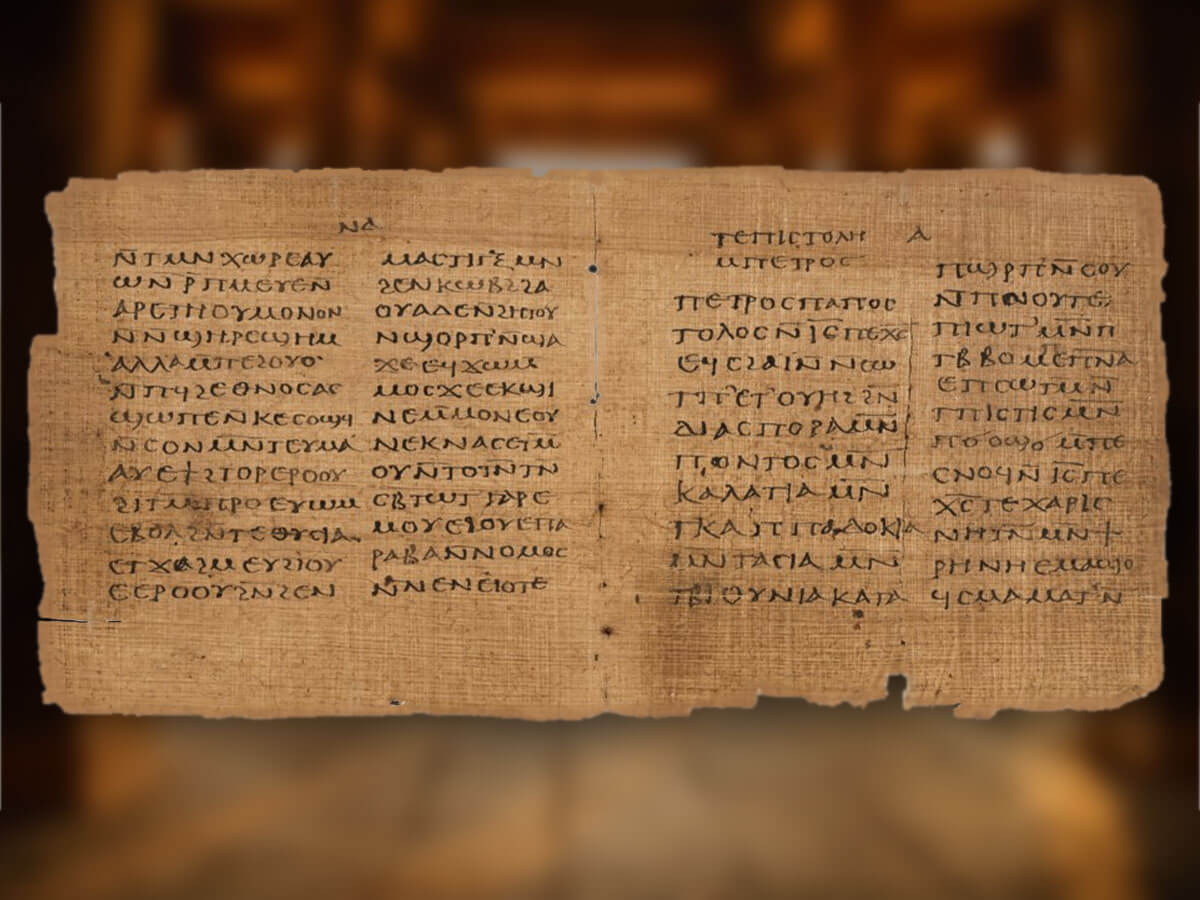
An ancient Christian manuscript could be setting a big price tag as it goes up for sale in June. The Crosby-Schøyen Codex, written on papyrus paper, is dated from 250 to 350 AD and is believed to have been produced in one of the first monasteries. The codex is 104 pages long (52 leafs), written over a period of 40 years and contains 1 Peter and the book of Jonah. It is one of the oldest remaining books in existence, due in part to Egypt’s dry climate, which helps to preserve the papyrus. Eugenio Donadoni, Christie’s Senior Specialist, Medieval and Renaissance Manuscripts told Reuters that Egypt’s climate has helped preserve most of the oldest documents found today. “All the major finds of Christian manuscripts that we had in the 20th century and at the end of the 19th century are all concentrated in Egypt for those very precise climactic conditions,” said Donadoni.
The codex was first discovered in the 1950s as part of the Bodmer Papyri, a collection of various Christian and pagan texts that were discovered in Egypt. It was bought by the University of Mississippi, where it remained until 1981. After a series of owners, Norwegian manuscript collector Dr. Martin Schøyen bought the codex in 1988. Schøyen will be auctioning off the codex, along with other pieces from his manuscript collection in June at Christie’s New York. The codex is expected to fetch anywhere between $2.6 million to $3.8 million pounds.
The codex was most likely constructed for “practical use” as its lack of ornamentation suggests and was probably intended to be used by a small Christian community in the area. Its frequent use would eventually lead to the papyrus wearing out, until someone decided “to reinforce it with a modest binding forming a ‘cartonnage’ with the remains of the first and last surviving leaves,” as suggested by the EWTN Catholic Global News. It is believed that the codex was then treated as a religious relic rather than a book and kept in a Pachomian monastery in Middle Egypt. It was eventually hidden on a hill with a cache of other documents, perhaps to keep it safe from Arab invaders, until its discovery in the 50s.
